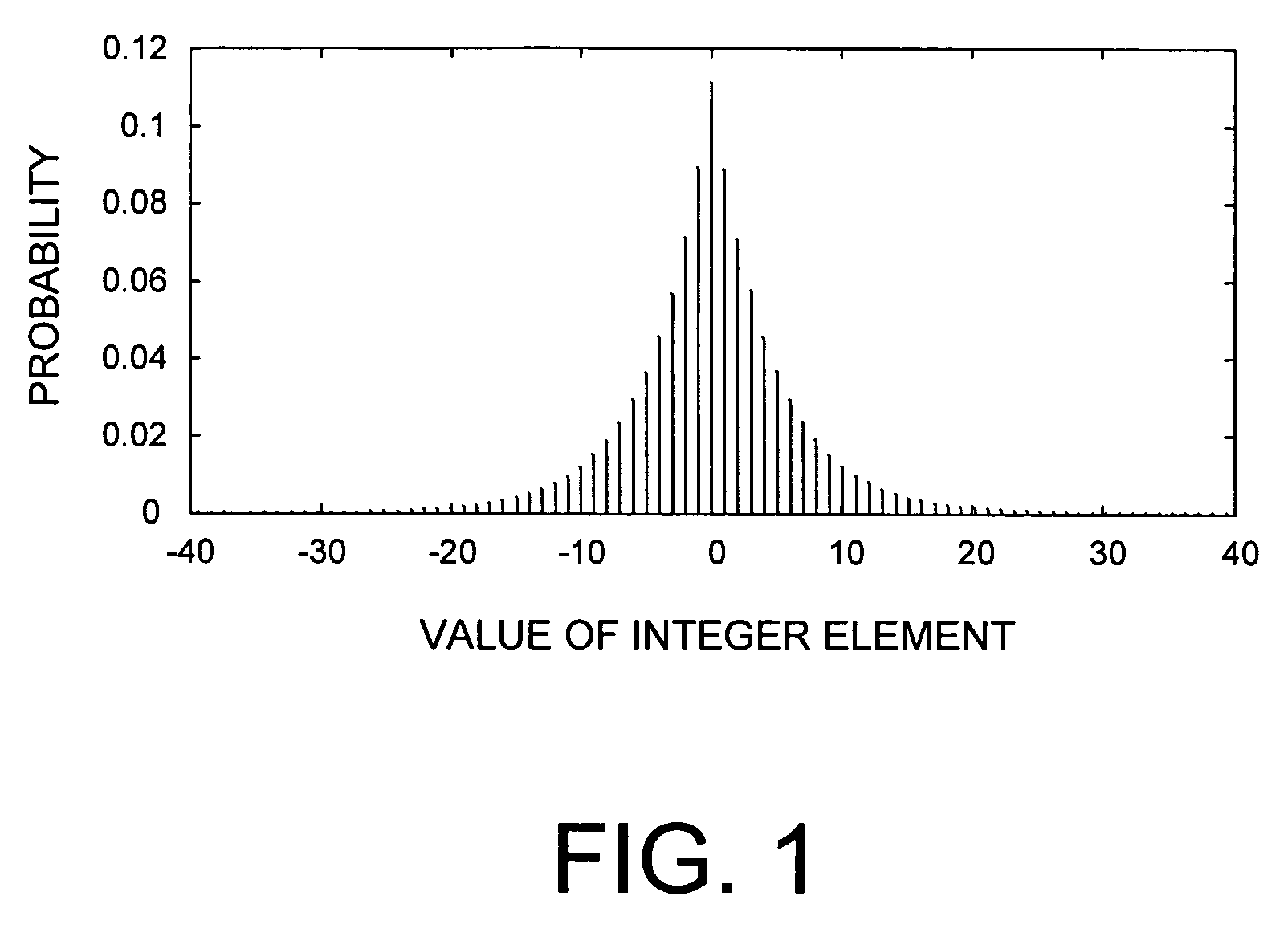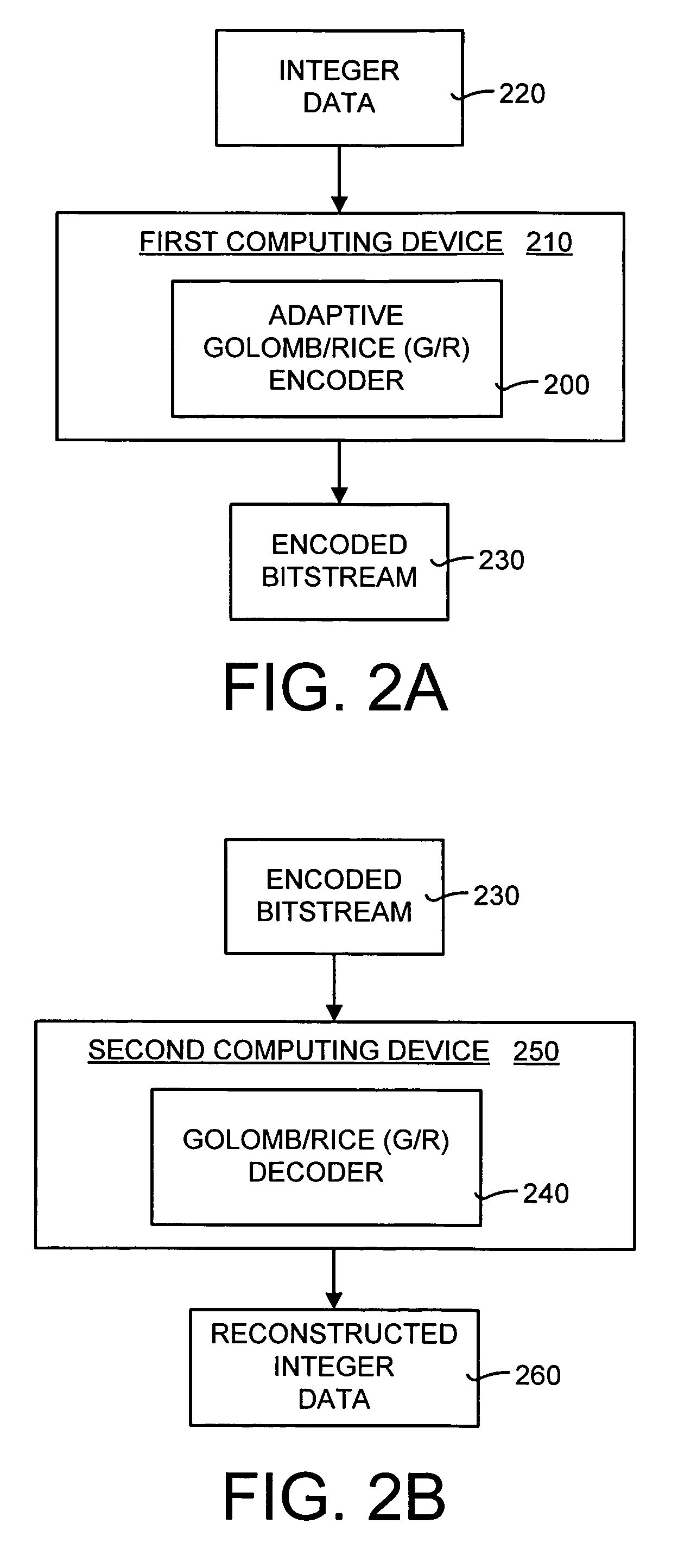Lossless adaptive Golomb/Rice encoding and decoding of integer data using backward-adaptive rules
a backward-adaptive, lossless adaptive technology, applied in the field of digital data processing, can solve the problems of low computational complexity of using backward adaptation, and achieve the effects of small memory footprint, limited processing power, and limited memory
- Summary
- Abstract
- Description
- Claims
- Application Information
AI Technical Summary
Benefits of technology
Problems solved by technology
Method used
Image
Examples
working example
VII. Working Example
[0086]In order to more fully understand the adaptive G / R encoder and method disclosed herein, the operational details of an exemplary working example are presented. It should be noted that this working example is only one way in which the adaptive G / R encoder and method may be implemented.
[0087]The adaptive Golomb / Rice (G / R) codec and method is an extension of the PTC entropy encoder disclosed in U.S. Pat. No. 6,477,280 cited above. However, the PTC entropy encoder of U.S. Pat. No. 6,477,280 is used for encoding binary data (typically bit-planes of integer data). The adaptive G / R codec and method disclosed herein can encode integer data having any input value. In other words, the adaptive G / R codec and method disclosed herein can encode data of any alphabet.
[0088]One advantage of the adaptive G / R encoder and method disclosed herein is that, unlike the PTC entropy encoder, there is no need to know the largest possible number of the input data. Instead, the adaptiv...
PUM
 Login to View More
Login to View More Abstract
Description
Claims
Application Information
 Login to View More
Login to View More - R&D
- Intellectual Property
- Life Sciences
- Materials
- Tech Scout
- Unparalleled Data Quality
- Higher Quality Content
- 60% Fewer Hallucinations
Browse by: Latest US Patents, China's latest patents, Technical Efficacy Thesaurus, Application Domain, Technology Topic, Popular Technical Reports.
© 2025 PatSnap. All rights reserved.Legal|Privacy policy|Modern Slavery Act Transparency Statement|Sitemap|About US| Contact US: help@patsnap.com



